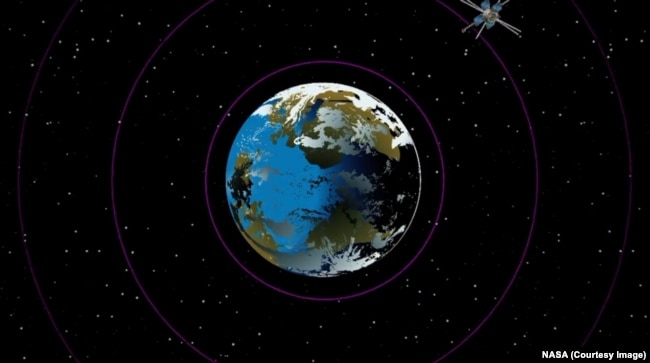Antrix an Indian company launches five satellites for France, Canada, Germany and Singapore. This solidifies India's entry into commercial space launch business.
---
NEW DELHI
India took another step Monday in its ambitions to tap the commercial potential of its space program by launching satellites for four other nations. Prime Minister Narendra Modi commended the countrys space program as the world's most cost effective.
Indias Polar Satellite Launch Vehicle blasted off Monday morning from the eastern port of Sriharikota carrying a 714-kilogram French Earth observation satellite and four smaller satellites.
Prime Minister Modi, who witnessed the launch, pointed out that all five satellites put into orbit were from advanced countries.
Even todays satellites are all from developed nations - France, Canada, Germany and Singapore. Truly this is a global endorsement of Indias space capabilities, said Modi.
The launch marked another milestone in Indias efforts to grab a larger slice of the lucrative global satellite launch market.
Focusing attention on the frugality of Indias space program, Modi said India has the potential to become the world's satellite launch service provider.
He pointed to reports that the $100 million spent on making the Hollywood movie Galaxy exceeded the cost of a spacecraft India sent to Mars last November.
Even today our program stands out as the most cost-effective in the world Our scientists have shown the world a new paradigm of frugal engineering and the power of imagination, said Modi.
Indias Mars program has won attention for its modest $73 million price tag. That is just over one-tenth of the money spent by NASA on a Mars mission it launched days after the Indian one.
Indian scientists say frugality has always been the goal of a space mission whose annual outlay is just $1 billion - a fraction of space programs in major space-faring nations such as Russia and the United States. This is the advantage India hopes to leverage in the commercial launch business.
Modi also sought to leverage Indias space program to give a further push to his diplomatic offensive in the South Asian region.
He called on Indian scientists to use their expertise in satellite technology to help all eight countries in the South Asian Association of Regional Cooperation, known as SAARC.
"Today, I ask our space community, to take up the challenge, of developing a SAARC satellite - that we can dedicate to our neighborhood, as a gift from India. A satellite, that provides a full range of applications and services, to all our neighbors, Modi said.
India has faced some criticism that a poor country should have more pressing priorities than launching satellites such as supplying clean water and toilets to its people. But Modi says that the countrys space program is making a huge contribution to the common man through its applications in areas such as disaster and resource management.
India Launches Satellites, Highlights Low Cost
---
NEW DELHI
India took another step Monday in its ambitions to tap the commercial potential of its space program by launching satellites for four other nations. Prime Minister Narendra Modi commended the countrys space program as the world's most cost effective.
Indias Polar Satellite Launch Vehicle blasted off Monday morning from the eastern port of Sriharikota carrying a 714-kilogram French Earth observation satellite and four smaller satellites.
Prime Minister Modi, who witnessed the launch, pointed out that all five satellites put into orbit were from advanced countries.
Even todays satellites are all from developed nations - France, Canada, Germany and Singapore. Truly this is a global endorsement of Indias space capabilities, said Modi.
The launch marked another milestone in Indias efforts to grab a larger slice of the lucrative global satellite launch market.
Focusing attention on the frugality of Indias space program, Modi said India has the potential to become the world's satellite launch service provider.
He pointed to reports that the $100 million spent on making the Hollywood movie Galaxy exceeded the cost of a spacecraft India sent to Mars last November.
Even today our program stands out as the most cost-effective in the world Our scientists have shown the world a new paradigm of frugal engineering and the power of imagination, said Modi.
Indias Mars program has won attention for its modest $73 million price tag. That is just over one-tenth of the money spent by NASA on a Mars mission it launched days after the Indian one.
Indian scientists say frugality has always been the goal of a space mission whose annual outlay is just $1 billion - a fraction of space programs in major space-faring nations such as Russia and the United States. This is the advantage India hopes to leverage in the commercial launch business.
Modi also sought to leverage Indias space program to give a further push to his diplomatic offensive in the South Asian region.
He called on Indian scientists to use their expertise in satellite technology to help all eight countries in the South Asian Association of Regional Cooperation, known as SAARC.
"Today, I ask our space community, to take up the challenge, of developing a SAARC satellite - that we can dedicate to our neighborhood, as a gift from India. A satellite, that provides a full range of applications and services, to all our neighbors, Modi said.
India has faced some criticism that a poor country should have more pressing priorities than launching satellites such as supplying clean water and toilets to its people. But Modi says that the countrys space program is making a huge contribution to the common man through its applications in areas such as disaster and resource management.
India Launches Satellites, Highlights Low Cost




